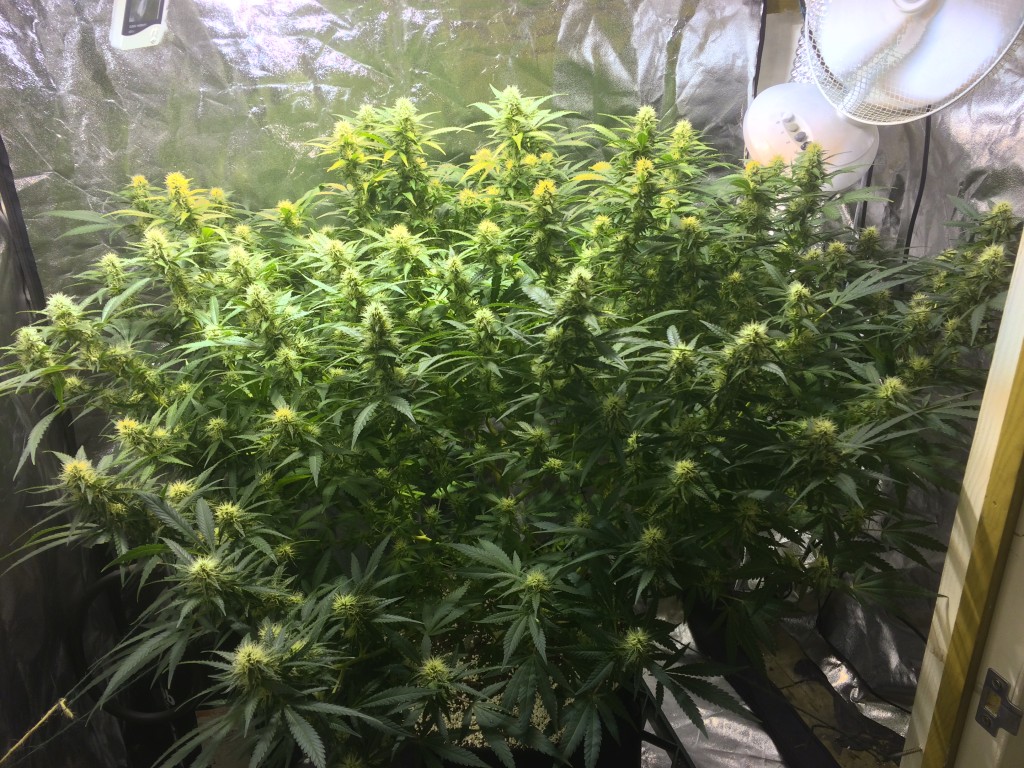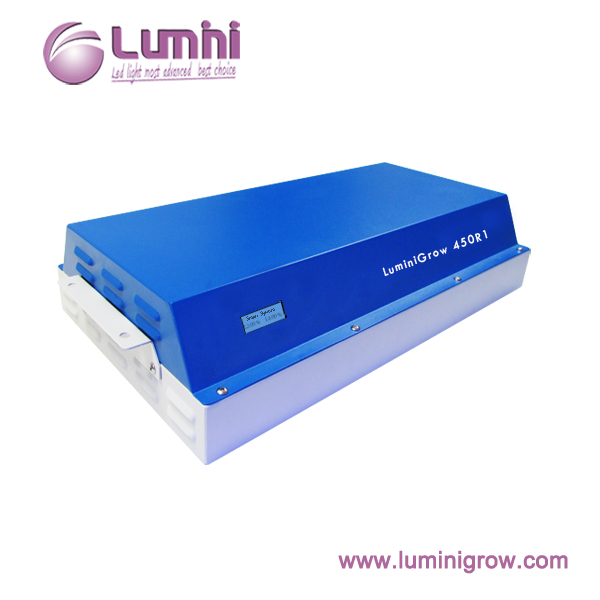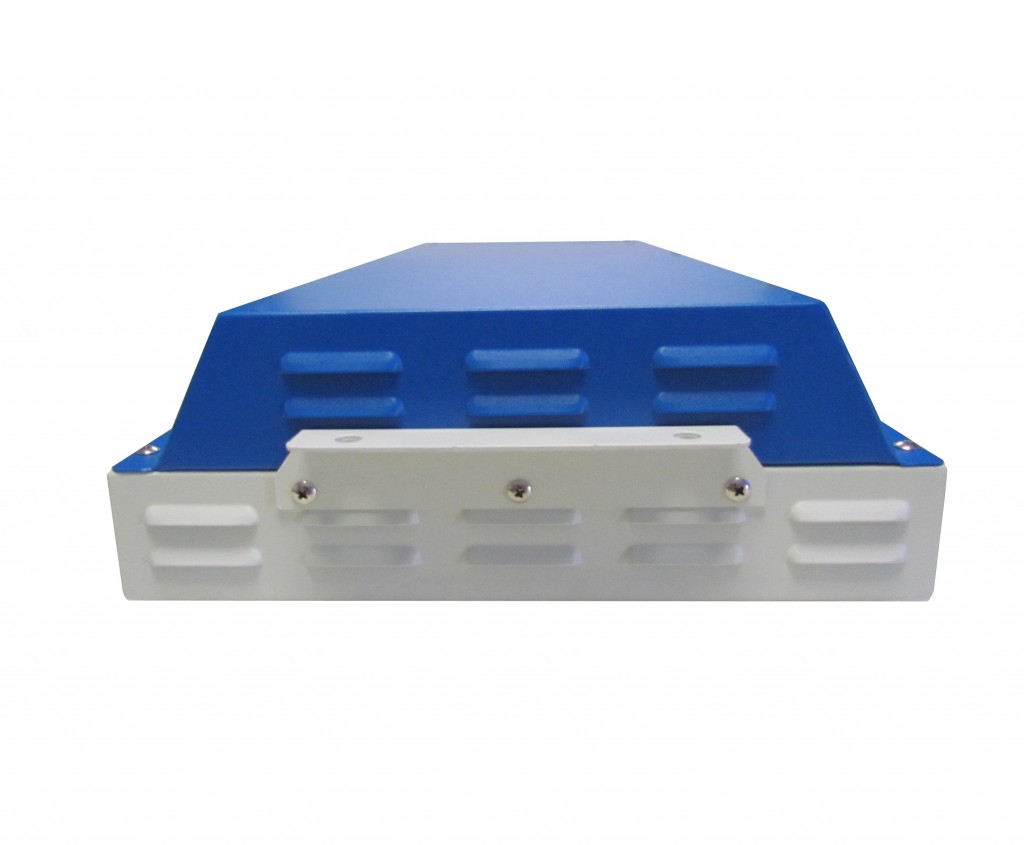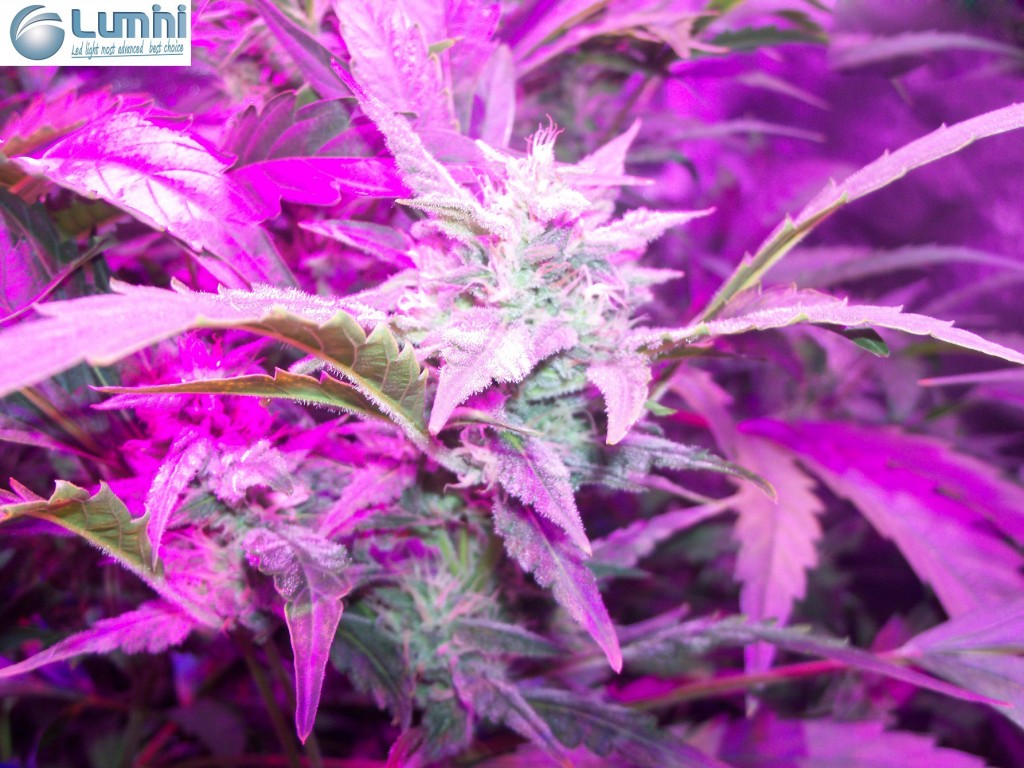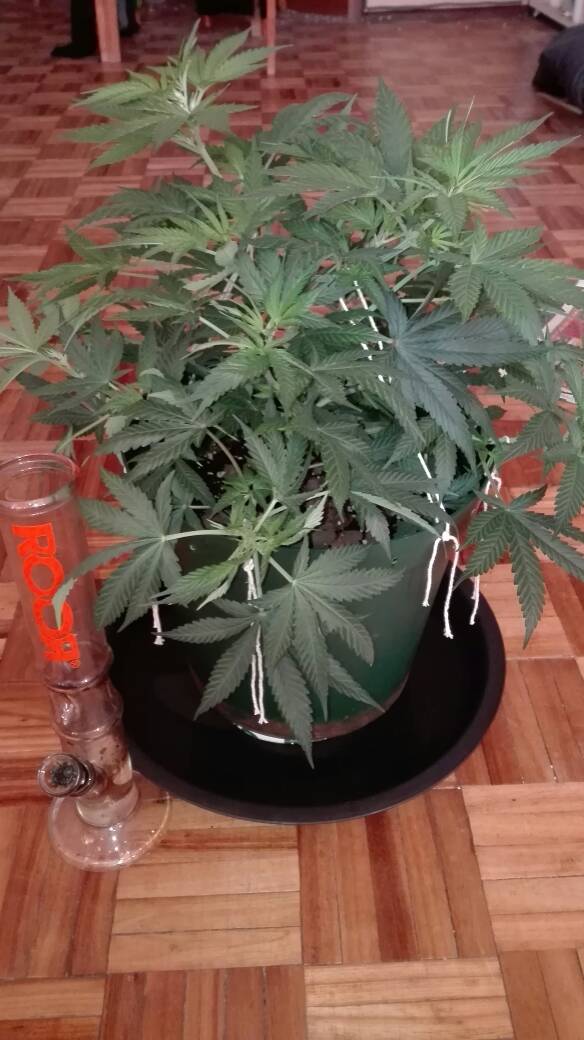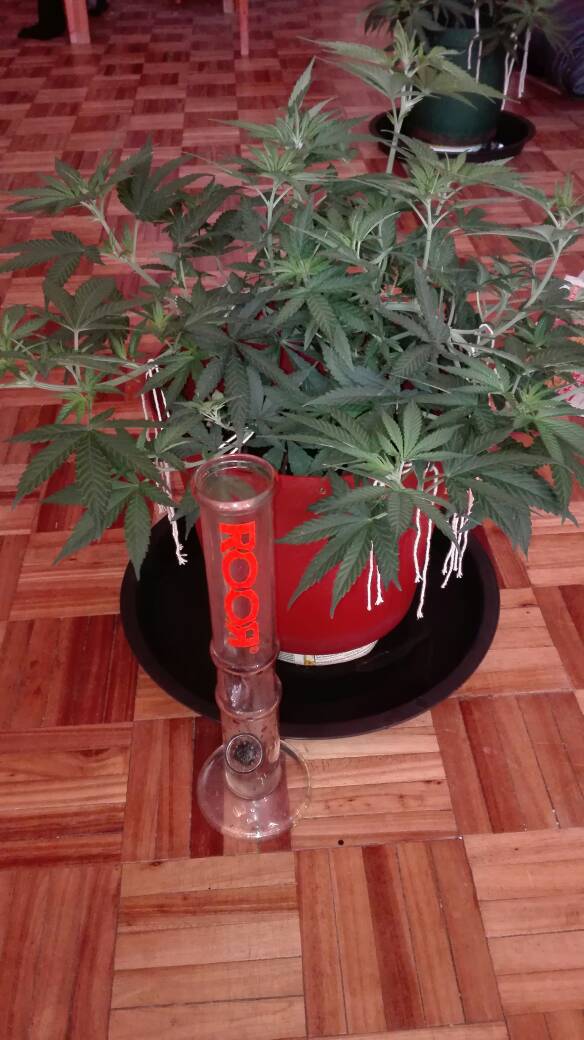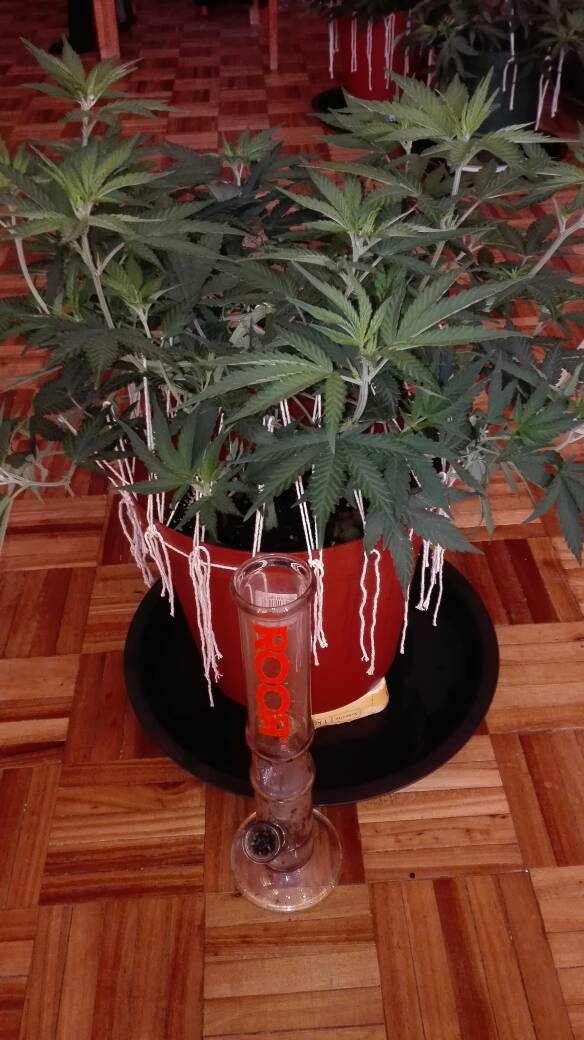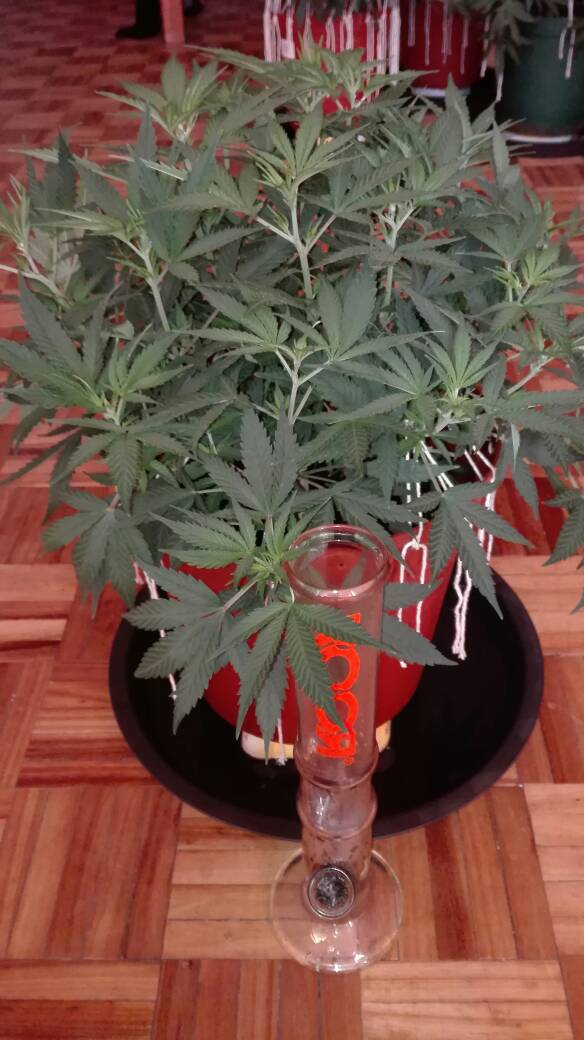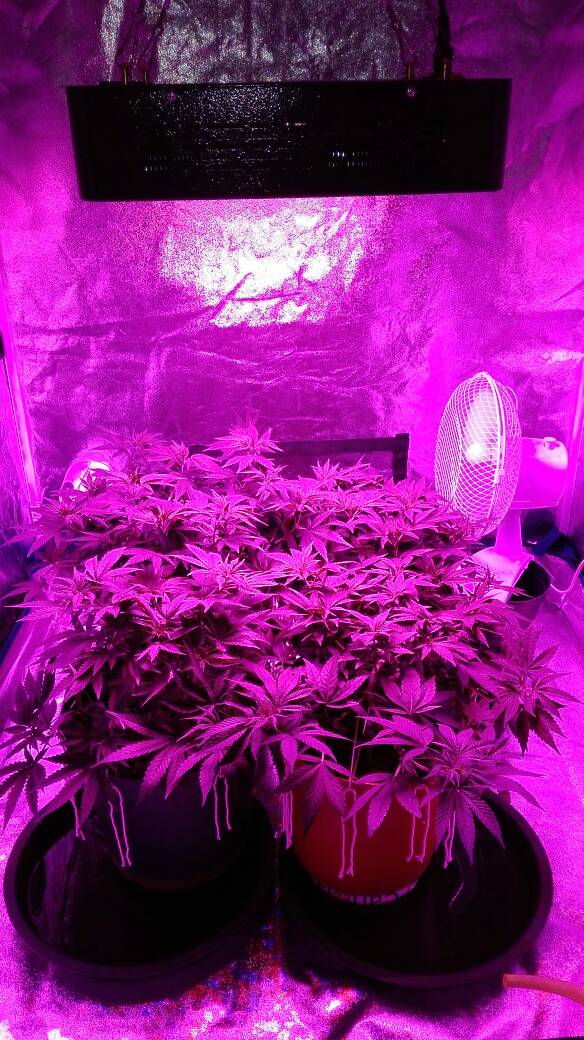- Thread starter
- #41
Lumini Grow
420 Member
Re: Bonus From LuminiGrow 400w LuminiGrow 450R1 Giveaway! Smart Control Programmable
 Are you a professional wirter?lol...2 g/w seems to be unbelivable for me, I can't imagine the bud's size. Was that all dry weight?
Are you a professional wirter?lol...2 g/w seems to be unbelivable for me, I can't imagine the bud's size. Was that all dry weight?
Maybe I should also look for Robinson to grow for us^_^. I can't agree with you more, it's time for leds, that's why we're here and trying to provide the best led for growers. LEDs have more advantage over conventional lightings, energy efficiency, usable spectrum, optimized heat dissipation, programmable control ability...Our lights are capable of all the features, but still have room for improvements. Hopping soon we'll be able to compete with name brand led in America with an affordable price. ^_^Anyway, it's regrettable that you're not intended to test our light out, hopefully in the future.^_^ have a nice weekend
.6 g/w isn't bad (IMHO) for someone with a couple years of experience with, say, MH/HPS if they're running LED for the first time - the lights serve the same purpose, but their characteristics are different enough that there is a learning curve. If the strain is new to the grower, is known for being a below-average yielder - or both - that could also mean less than stellar yields. Some of the most wonderful sativas I have ever grown were poor yielding strains (but they weren't being grown to sell, so that was fine).
I've achieved a gram per watt or a smidgen over it, off and on, but it depended on everything being optimum (or nearly so) along with decent-yielding strains (or one - having only one strain in the grow room helps, too), either a well-filled scrog or fairly dense sog, and so forth. It generally happened after I had grown the strain(s) enough to be able to both anticipate things and "read" my plants. When temperatures drop just a little bit - both in terms of highs and average throughout the day - I'll be starting my journal back up... and growing under LED for the first time ever. Because of that, and because I'll be growing a couple strains, one of which is ~90% sativa and the other is at least 50% (plus, possibly, an additional strain), I do NOT expect to do very well. I'll be learning the strains (well, relearning one of them, but it has been 15 or more years since I grew it and the breeder has changed its genetics somewhat, so...) and the light. To be honest, I will be happy if I hit .6 g/w, lol. More than anything else, I plan to prove - both to myself and to others - that an old fart (not that old, but...) who has used MH and HPS since they became generally available (before that I used traditional tube-type fluorescents) but who has never used an LED grow light before can use one, and to good effect. I have learned the methods that work best for me, and I realize that these may not be the best for growing under LEDs. So I may try a mix of things. I figure that there are a lot of folks who... who might feel that LEDs are a viable technology, but who worry that the learning curve might be to steep for them, that they may have to drastically change the way they do things, et cetera. I hope to show that this is not the case. When I was younger, I didn't even consider things like that - I just picked up something new and went with it. For the over-40 crowd (a large group), there is a little more effort involved when trying new things. But... not so much that it should not be considered.
I've read about a grower named Heath (Robinson, I think) who has topped 2 g/w numerous times - and who has managed 2.4 g/w at least once. But that is with HPS lighting in a vertical setup, with a custom system that he designed and built himself. It is also with ONE high-production strain that he knows very well. But that is very much an extreme example, lol. And he has "much experience" with atypical grows - six years ago, he posted a thread here with pictures of a "tree" grow that yielded 56 ounces - from one plant! IIRC, it received 900 watts, so that would have been ~1.74 grams per watt. He also posted a picture of another plant that "only" (lol) hit around 1.42 grams per watt... while yielding 76 ounces :lol: .
Unfortunately, it would be very, very difficult (and probably impossible) to replicate the kind of setups that he uses with LED panels, simply because LED panels only produce illumination in one direction, and he uses open bulbs (no reflectors). As to whether or not someone could replicate those kinds of yields under LED... that remains to be seen, but I expect if it IS possible, it will be several to many years in the future. But that isn't a knock against LED grow lights - HPS had been used for decades before someone came along and not only hit the ball clear out of the park (so to speak), they also hit it out of the town that the park was located in. The ability to customize the spectrum with exactly the wavelengths - and ratios of same - will help, along with ongoing research into which wavelengths of light and in what combinations will give the best results; people are still learning how certain wavelengths are use by cannabis (and how those wavelengths affect them - such as far red and the red to far red ratio). Figuring out how to increase the footprint without compromising intensity and penetration will also help.
I have not had the opportunity to try any of your products, and do not expect to... I am too poor to buy them, lol, and I have no past journals to point to as examples of my work (having been generally quite paranoid). But I am certainly willing to give you the benefit of the doubt, that you make decent products. Still... It seems like the best LED growers cannot - yet - approach the accomplishments of the best HID ones. With that being said, however, I do feel that the future of indoor growing (cannabis, especially) is LED. I do not see room for great improvements in HID (MH or HPS) technology at this time. There is only so much one can do to improve their spectrum. Electronic ballasts have arguably been an improvement. CMH looks reasonably promising. Double-ended bulbs appear to provide better performance. But these things - and anything that is likely to come in the near future - are merely evolutionary improvements on the same basic technology. And I would guess that manufacturers know this (and, therefore, the R&D budgets for HID technology are not going to be huge). LED grow light technology, is still young enough that I would not be surprised to see revolutionary improvements in the foreseeable future. Not tomorrow, lol, and most likely not next week. Probably not next month - and maybe not next year. But soon enough that I expect (or at least hope) to still be around to see such improvements. In the meantime, you LED manufacturers will have your evolutionary improvements, too - and those are enough to improve your competitiveness at a time when, for many people, LED grow light panels are already competitive with HIDs (to a greater or lesser degree, depending on various factors).
I think it is a good time for LEDs. Companies such as Cree, Osram, and Philips (just to name a few) are spending LOTS of money on R&D. For consumers... we are (for the most part) past the "hype" phase of wildly unrealistic claims. Prices, while still high, are often less than they were a few years ago - while performance is much better. As is true with most things, one might worry that the product that one buys this year will be beaten by what is likely to come out next year, or the year after - but at the same time, the products available NOW are good enough to fulfill their purpose. So it is a good time to be a consumer. For manufacturers/sellers... This seems like a good time for you/them, as well. The average indoor grower no longer looks at your products as if they are merely oddities. Quality has improved and continues to do so. This means not only are warranty issues likely to be less of an issue, but companies are less likely to see their reputations get damaged. Sales are up - and can be expected to continue to climb. People are buying products because they are performing reasonably well. But the products are improving at a steady enough rate that it is not only the first-time buyers who are purchasing them, but also the people who bought product last year or the year before, who see a chance to upgrade and have a reasonable expectation of actually getting an upgraded product. Those evolutionary improvements I mentioned will see to that - and, again, there is the chance of a revolutionary improvement that will catapult a company to the top in terms of sales (even more so if the improvement is such that it manages to get that company a lot of publicity). Many municipalities, government agencies, businesses, et cetera are still in the process of upgrading their "old" types of lighting - and CFLs have turned out to leave a lot to be desired. Therefore, those kinds of entities are - and will be - buying a lot of LEDs. And that will fuel a lot of additional R&D. That will benefit everyone from the component manufacturers, to the businesses - such as yourself - who design, assemble, and sell the complete packages... and, of course, the consumers.
The future of LED grow light technology... is looking very bright ( :lol: ) .
I just realized that this post has become a LOT larger than I had originally intended it to be. My apologies. I am looking forward to seeing grow journals which utilize your products. I have been a huge "gadget freak" ever since I was old enough to tie my own shoes, lol... I got my own computer when I was 10 or 11 at a time when most folks had never even seen one - and made friends with a couple of teachers at a school on the other side of town so I could take home their portable computers (which weighed around 45 pounds at the time :rolleyes3 ), et cetera. And, even though I see no way of getting to try your products, myself, I can still enjoy new things vicariously, by observing others do so....
 Are you a professional wirter?lol...2 g/w seems to be unbelivable for me, I can't imagine the bud's size. Was that all dry weight?
Are you a professional wirter?lol...2 g/w seems to be unbelivable for me, I can't imagine the bud's size. Was that all dry weight?Maybe I should also look for Robinson to grow for us^_^. I can't agree with you more, it's time for leds, that's why we're here and trying to provide the best led for growers. LEDs have more advantage over conventional lightings, energy efficiency, usable spectrum, optimized heat dissipation, programmable control ability...Our lights are capable of all the features, but still have room for improvements. Hopping soon we'll be able to compete with name brand led in America with an affordable price. ^_^Anyway, it's regrettable that you're not intended to test our light out, hopefully in the future.^_^ have a nice weekend





